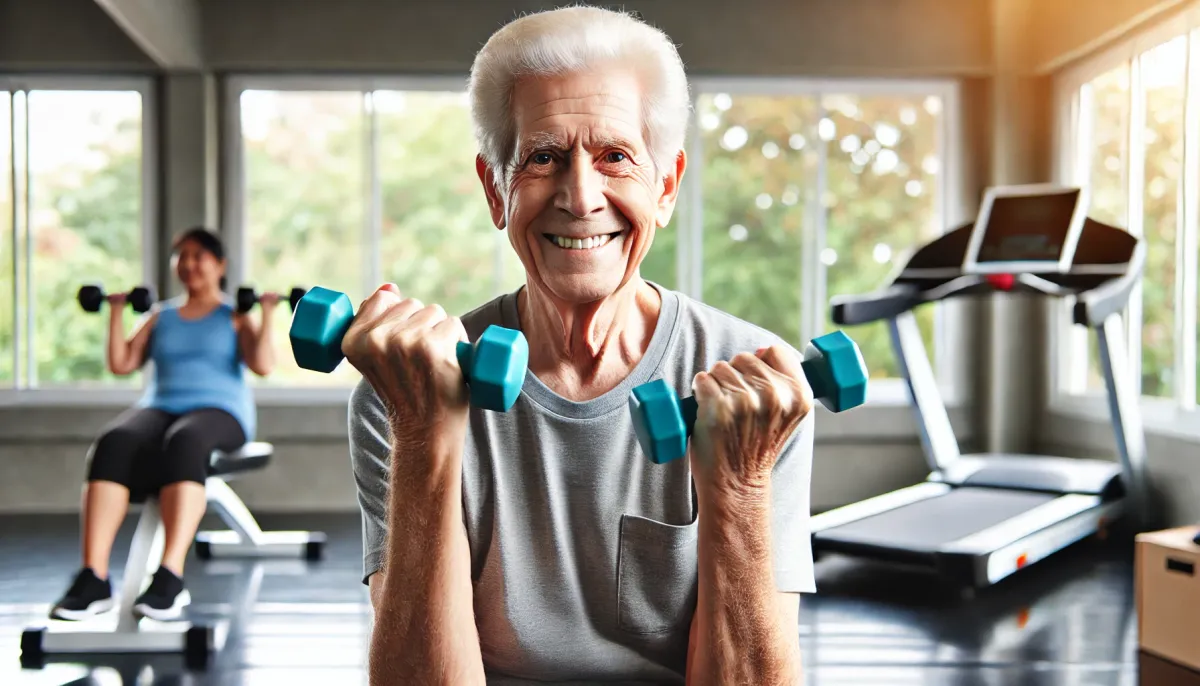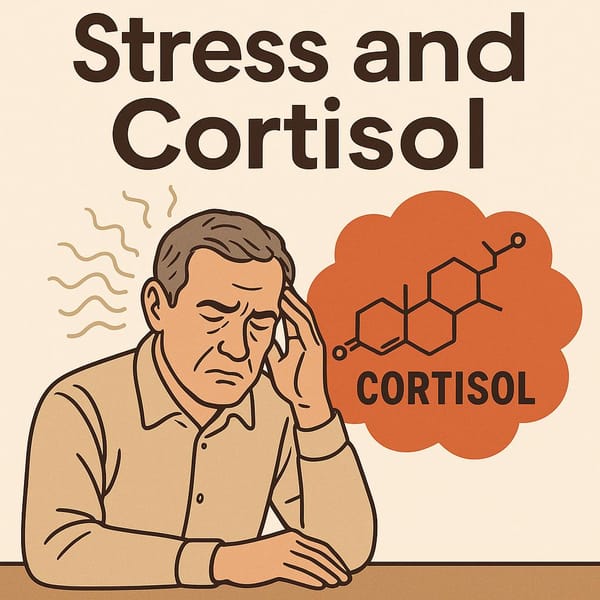Sarcopenia: Understanding Muscle Loss in the 50+ Population and Effective Prevention Methods
Discover how to prevent sarcopenia in your 50s and beyond with exercise, proper nutrition, and lifestyle changes for stronger, healthier muscles.

Introduction
Sarcopenia is a condition characterized by the loss of muscle mass and strength that naturally occurs as we age, especially after age 50. It can significantly impact daily activities, quality of life, and increase the risk of other diseases. Understanding the causes, symptoms, and ways to prevent or mitigate sarcopenia is crucial for everyone. This article presents reliable, evidence-based information and practical advice to help older adults maintain healthy muscles.
The Importance of Sarcopenia in the 50+ Population
The term “Sarcopenia” comes from the Greek words “Sarx” (flesh) and “Penia” (deficiency). It refers to the progressive loss of muscle mass and strength associated with aging. Research indicates that muscle loss can begin as early as age 40 and accelerates noticeably after 50 (Reference: National Institute on Aging, 2019). The repercussions can include reduced mobility, decreased balance, and an increased risk of other conditions like osteoporosis, hypertension, and diabetes.
In an aging society, such as in many countries worldwide—including Thailand—sarcopenia is a concern that should not be overlooked. However, with advancements in medical technology and a better understanding of exercise and nutrition, preventing and restoring muscle mass is achievable.
Causes and Risk Factors of Sarcopenia
- Aging
- As we age, the rate of protein synthesis in muscles declines, while levels of hormones responsible for muscle repair (e.g., growth hormone, testosterone) also drop (Reference: Journals of Gerontology, 2020).
- Physical Inactivity
- Leading a sedentary lifestyle is a major factor in accelerating muscle deterioration, especially in individuals over 50. Prolonged periods of sitting can also increase the risk of obesity and other chronic diseases.
- Nutritional Deficiency
- Insufficient protein intake or deficiencies in certain nutrients like vitamin D and calcium can compromise muscle repair and regeneration (Reference: American Journal of Clinical Nutrition, 2021).
- Hormonal Changes
- Post-menopausal women, for instance, experience lower estrogen levels, affecting metabolism and protein synthesis in muscles.
- Genetics
- Studies suggest that genetics may influence how rapidly individuals lose muscle mass. Some people are genetically predisposed to quicker muscle loss compared to others of the same age.
Signs and Symptoms of Sarcopenia
- Slower Movement
- Activities like walking or climbing stairs may become more challenging due to weakened leg muscles.
- Easy Fatigue and Exhaustion
- Longer recovery times from physical activity, feeling tired even from routine daily tasks.
- Loss of Balance
- Frequent falls or fear of falling, often due to reduced leg and core strength.
- Reduced Muscle Size (Muscle Wasting)
- Noticeably smaller arms, legs, or torso, or feeling that the muscles are softer than before.
Effective Ways to Prevent and Manage Sarcopenia
1. Appropriate Exercise
- Resistance Training
- Lifting weights, using resistance bands, or bodyweight exercises (push-ups, squats, planks) at least 2-3 times per week can stimulate muscle growth.
- Aerobic Exercise
- Activities like brisk walking, jogging, swimming, or cycling to enhance cardiovascular health and improve blood flow to muscles.
- Balance Training
- Yoga, Tai Chi, or balance board exercises can reduce the risk of falls and strengthen core muscles.
- Flexibility and Recovery
- Stretching after workouts prevents injury and eases muscle soreness; 5-10 minutes of stretching is recommended.
Home-based Weight Training Plan (Minimal Equipment)
| Exercise | Sets x Reps | Rest Between Sets | Target Muscles |
|---|---|---|---|
| Push-Up | 2-3 sets x 8-12 reps | 60-90 seconds | Chest, shoulders, triceps |
| Bodyweight Squat | 2-3 sets x 10-15 reps | 60-90 seconds | Legs (quads, glutes), core |
| Glute Bridge | 2-3 sets x 10-12 reps | 60-90 seconds | Glutes, hamstrings |
| Overhead Dumbbell/Water Bottle Press | 2-3 sets x 8-12 reps | 60-90 seconds | Shoulders (deltoids), triceps |
| Seated Row with Resistance Band | 2-3 sets x 10-12 reps | 60-90 seconds | Back (lats), biceps |
| Plank | 2-3 sets x 20-30 secs | 60 seconds | Core, shoulders, lower back |
Note: Always warm up for 5-10 minutes (e.g., light walking or dynamic movements) before exercising and cool down with another 5-10 minutes of stretching.

2. Proper Nutrition
- Protein
- Older adults need adequate protein (about 1.0-1.2 g per kilogram of body weight daily, or up to 1.5 g/kg for physically active or at-risk individuals). Good sources include lean meats, eggs, tofu, fish, and legumes.
- Vitamins and Minerals
- Vitamin D is essential for muscle and bone health (found in salmon, tuna, egg yolks, mushrooms) and can be synthesized through moderate sun exposure.
- Calcium supports bone and muscle function (found in dairy products, white beans, tofu, and dark green vegetables like spinach and broccoli).
- Omega-3 Fatty Acids
- Omega-3s help reduce inflammation and support muscle health. Sources include salmon, tuna, flaxseeds, and walnuts.
- Dietary Fiber
- Supports digestion, helps control blood sugar levels, and aids in weight management, indirectly benefiting joint health and overall fitness.
3. Hormonal Management
- In some cases, post-menopausal women with low estrogen may consult a doctor about Hormone Replacement Therapy (HRT). This can help mitigate symptoms associated with sarcopenia but should be done under professional supervision.
4. Rest and Stress Management
- Adequate Sleep
- Aim for 7-9 hours of sleep per night to support muscle protein synthesis and overall recovery.
- Stress Management
- Chronic stress elevates cortisol levels, which can inhibit muscle building. Practices like meditation, yoga, or engaging in relaxing hobbies can help.

5. Regular Health Check-ups and Monitoring
- Annual Health Exams
- Regularly assessing muscle mass, bone density, and hormone levels helps early detection and management of sarcopenia.
- Physical Fitness Tests
- Simple evaluations like hand-grip strength tests or chair stand tests can track muscle function and progress over time.
Muscle-Building Tips for Older Adults
- Plan Your Workouts: If you’re new to exercise, start slowly (e.g., 10-15 minutes of walking 3 times a week) before gradually increasing intensity.
- Set Clear Goals: Keep a record of your progress, like how many squats you can do or how far you can walk.
- Choose Enjoyable Activities: You’re more likely to stick to exercises you find fun, such as dance aerobics, yoga, or group cycling.
- Seek Professional Guidance: If unsure where to start or have specific health concerns, consult a sports medicine specialist, doctor, or experienced fitness trainer.
Precautions and Warnings
- Avoid Unnecessary Supplements: Consult a healthcare professional before taking muscle-building supplements.
- Listen to Your Body: Stop exercising and seek advice if you feel unusual muscle or joint pain.
- Set Realistic Goals: Rebuilding muscle takes time; avoid overtraining, which can lead to injury.
Conclusion
Sarcopenia is a common concern among older adults, potentially affecting mobility, daily activities, and increasing the risk of chronic diseases. By understanding its causes, symptoms, and following practical lifestyle recommendations—such as resistance training, adequate protein intake, lifestyle modifications, and regular health screenings—you can maintain muscle strength and quality of life for years to come.
Disclaimer: This article is for general informational purposes only. It is not a substitute for medical advice. Consult a healthcare professional for personalized guidance.



